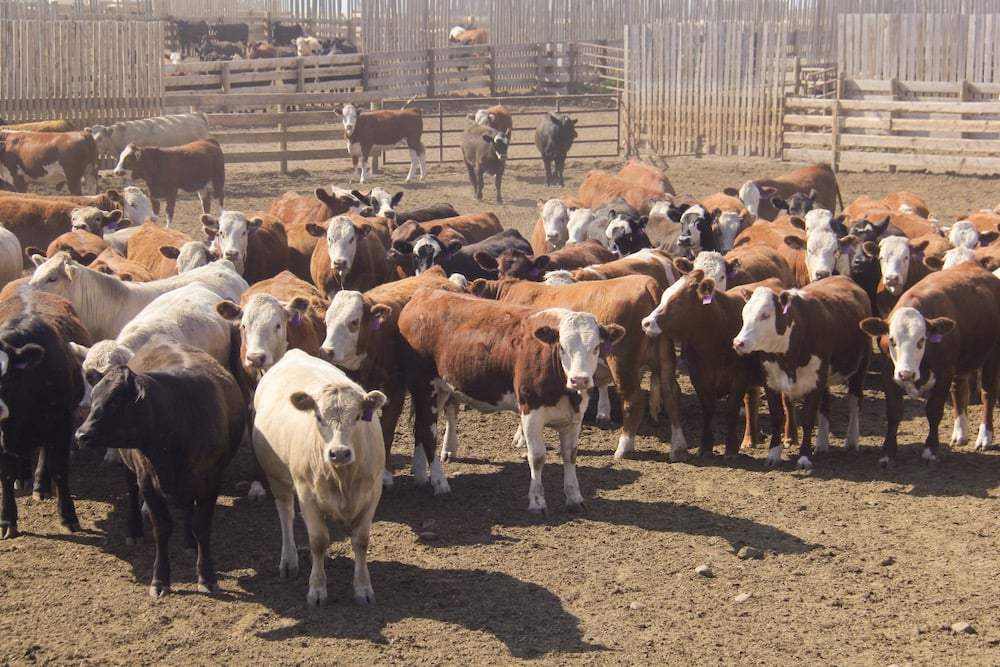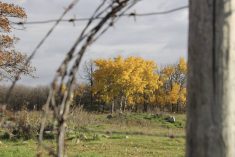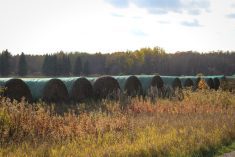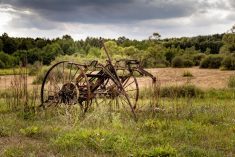Sacramento | Reuters — Rain-soaked Californians took advantage of a break in a weeks-long deluge to haul away dead trees, restore downed power lines and prepare new stacks of sandbags before another series of storms hits the state beginning Friday.
In Monterey County along the state’s central coast, communities near the still-rising Salinas River were under an evacuation order, as authorities warned that the cresting waterway could cut off homes and businesses from essential services.
As many as 19 people have been killed in the storms, including two deaths announced on Wednesday — one person found dead in a submerged car in Sonoma County north of San Francisco, and another who was pulled from the American River in El Dorado County on Jan. 3.
Read Also

U.S. livestock: Feeder cattle rise to new highs on tight supply, strong cash prices
Chicago | Reuters – Chicago Mercantile Exchange feeder cattle futures rallied on Thursday to a record high on strong cash…
A five-year-old boy swept away in San Luis Obispo County had still not been found by Wednesday evening.
At least two more storm systems were set to pound California and the Pacific Northwest starting Friday and over the weekend, the National Weather Service said, including another atmospheric river, systems of dense moisture funneled into California from the tropical Pacific. The state has already been hit with seven such weather systems over the past two weeks.
Precipitation from the storms will fall as rain along the coast and snow in the Sierra Nevada and other mountain ranges, the National Weather Service said.
Cut off from services
In Monterey County, water from prior storms continued to swell the Salinas River, officials said. Some residents of the Monterey Peninsula and parts of the Salinas area could be cut off from other communities for as many as three days as roads flood.
“My husband went and got some provisions, just things we needed, so if we’re going to be here two to three days or however long we may be stranded, we’re good to go,” said Diane Souza, a retired office manager who decided to ride out the storm in the community of Spreckels near the river.
The couple put sandbags around their garage, which sits lower than the rest of the house, and put together a bag with emergency items in case they need to flee.
Not far away, the muddy Salinas River flowed at a steady pace, widening and encroaching on nearby trees. The tops of fences could be seen just above the rising water.
Monterey County Sheriff Tina Nieto said her officers had gone door-to-door in communities affected by evacuation orders, urging people to leave. She said the river was expected to hit flood stage by 11 p.m. Thursday night and remain high through the weekend.
Dozens of roadways across the state were made impassable by mudslides and snow as the state’s department of transportation urged drivers to stay off impacted roads until crews could clear the way.
In the state capital of Sacramento, crews continued to clear fallen trees and restore power on Thursday, aiming to complete as much of the work as possible before rains begin again on Friday.
The heavy rains have eased California’s historic drought but not ended it, the U.S. Drought Monitor showed Thursday. The state is no longer considered to be in extreme drought or exceptional drought, the two worst categories, but much of the state is still considered to be experiencing moderate or severe drought conditions.
Even with more atmospheric rivers in the immediate forecast, the state’s water system will remained strained in coming years without new infrastructure to capture more storm water, restore flood plains and recycle wastewater.
— Reporting for Reuters by Sharon Bernstein; additional reporting by Nathan Frandino.
Explainer: Why weeks of rain in California will not end historic drought
By Daniel Trotta
Reuters — California has been deluged since Dec. 26 by seven atmospheric rivers that have dumped up to 76 cm of rain over some areas, but the drought that has gripped the western U.S. remains far from over.
Virtually none of the storms has reached the Colorado River basin, which means the river that provides drinking water to 40 million people in seven states will continue to be endangered.
Even with more atmospheric rivers in the immediate forecast, and larger and more frequent ones predicted in the future, California cannot solve its long-term water crisis without major infrastructure investments to capture more storm water, restore flood plains and recycle wastewater.
Meanwhile, California’s US$50 billion agricultural industry continues to consume 80 per cent of the state’s supply.
Weather whiplash
Climate change means climate extremes. As California experiences more severe droughts and heat waves, its occasional wet years are expected to be excessively rainy. But the state’s water infrastructure, mostly built in the 20th century when the population was barely half of today’s 40 million, is ill-equipped for the new situation.
On Dec. 14, the Metropolitan Water District of Southern California declared a drought emergency for all 19 million people in the region. A few weeks later, the state was underwater with major flooding.
Despite a deluge that by one estimate has been expected to dump more than 80 trillion litres, the state’s major reservoirs remain well below their historic average. The largest reservoirs, at Shasta and Oroville, are still at 42 and 47 per cent of capacity, according to state data.
The shortfall underscores the severity of the drought. A report published in the journal Nature last year found 2000 to 2021 to be the driest 22-year period for southwestern North America in at least 1,200 years.
Infrastructure deficit
The state’s infrastructure, largely a network of cement canals, lacks the capacity to capture excess stormwater.
Irrigation and flood control projects were largely designed to convey water as quickly as possible in straight lines. That deprives flood plains of water taking a natural meandering path that would better protect adjacent cities from floods while also helping recharge the aquifer below.
With temperatures rising, snowpack in the mountains is melting more rapidly each spring, and the state lacks enough storage capacity to conserve the runoff.
California Governor Gavin Newsom plans to ramp up infrastructure spending, including US$8.6 billion budgeted for drought and flood management next year. Billions more are available under a major U.S. infrastructure law signed by President Joe Biden in 2021.
But until that money is converted to projects, excess stormwater will continue to drain into the Pacific Ocean.
Colorado River under stress
Arid southern California relies on two external sources to slake its thirst: aqueous northern California, through massive state and federal conveyance systems; and the Colorado River, under a century-old compact that assigns its water to seven states, with California receiving the largest allotment.
But the compact was written after an unusually wet period, assigning the states more water than the river can now provide. Even as the Colorado River basin faces its own drought, and the atmospheric rivers provide no relief, the Colorado River suffers more from overuse than from a lack of precipitation.
The U.S. Bureau of Reclamation has warned the seven states in the compact — Arizona, California, Colorado, Nevada, New Mexico, Utah and Wyoming — that they must negotiate a new agreement to reduce consumption 15-30 per cent by Jan. 31 or else face mandatory cuts imposed by the federal government.
















